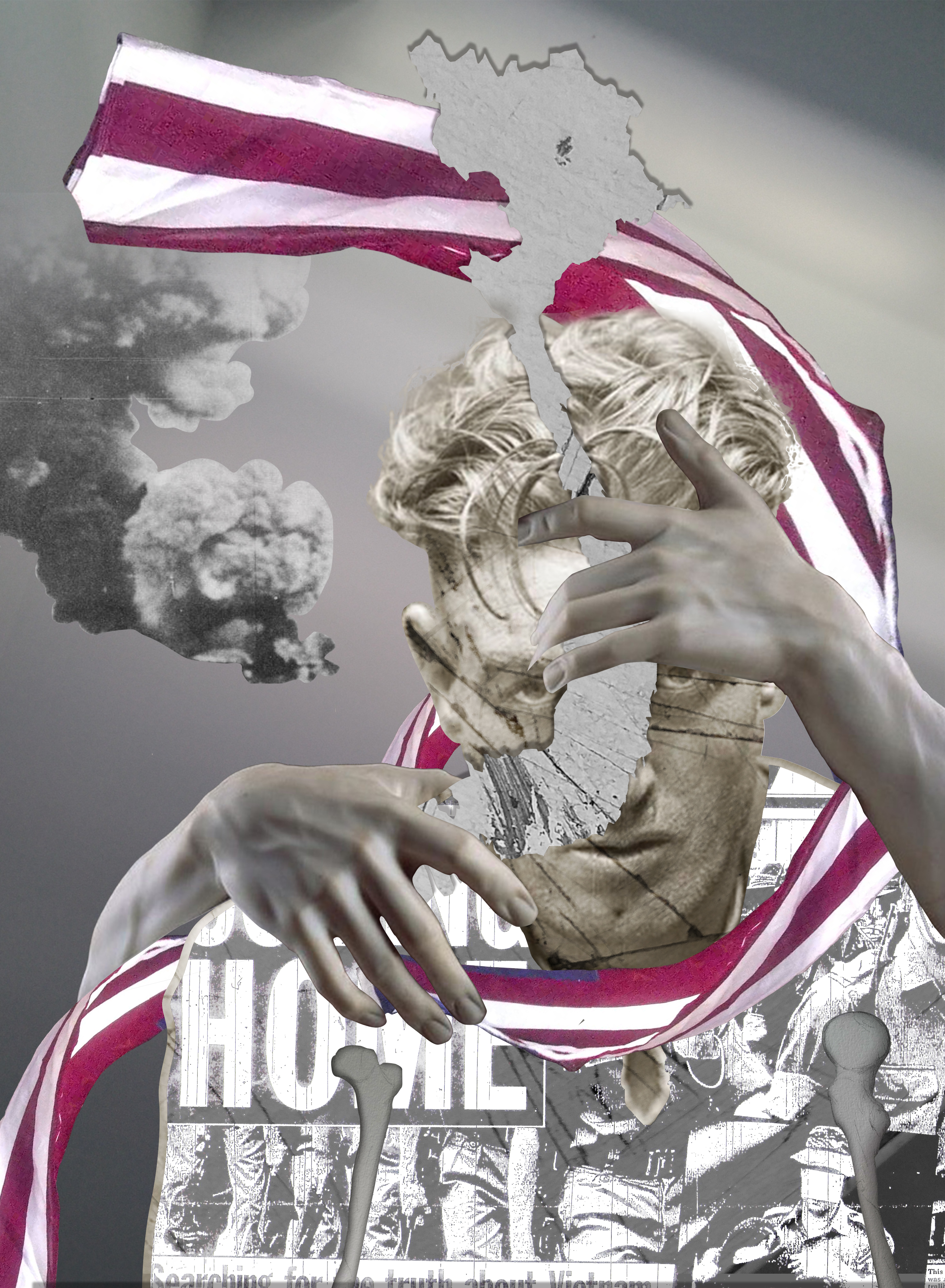This artifact was created by Marcel Broodthaers based on the fact that soldiers’ remains always would be covered with national flags as a “political cult” (Sebastian). The artist used surrealism to express his dissension to the existence of this tradition. This piece is an anti-war work in essence with a unique presentation. It reminds me of Vietnam war, which can be the potential topic for my final work.
“Fémur d’homme belge” and “Fémur de la femme francaise”- two human thighbones painted in the Belgian and French national colours – belong to the early work of the artist Marcel Broodthaers. While the semiotic reading of artworks is the predominant mode of interpretation for Broodthaers’ entire ouvre, the special significance of these two objects seems to lie at least as much in the iconography of the material bone. Bones have played an important role in many different aspects of everyday-life, religion and politics for several thousand years. But especially in modern times, the claim to the mortal remains of the fallen soldiers has developed to a substantial element of nationalism; soldiers’ cemeteries have since become sites of national worship and pilgrimage. Broodthaers’ painted femurs remind us of the meaning that bones have within the political cult of the dead and arouse associations with the stately burial of coffins that have been covered with national flags – and the human relics beneath them. By pointing directly to the material that is the unresisting result of death, the artist turned against the creation of national myth and instead revealed the absurd logic of war.
Sebastian Hackenschmidt, “A Material Matter: Marcel Broodthaers’ Use of Bones as a Surrealist Intervention against the Political Cult of the Dead,” Image & Narrative, Publish November 2005, Accessed May 2, 2016. http://www.imageandnarrative.be/inarchive/surrealism/hackenschmidt.htm


